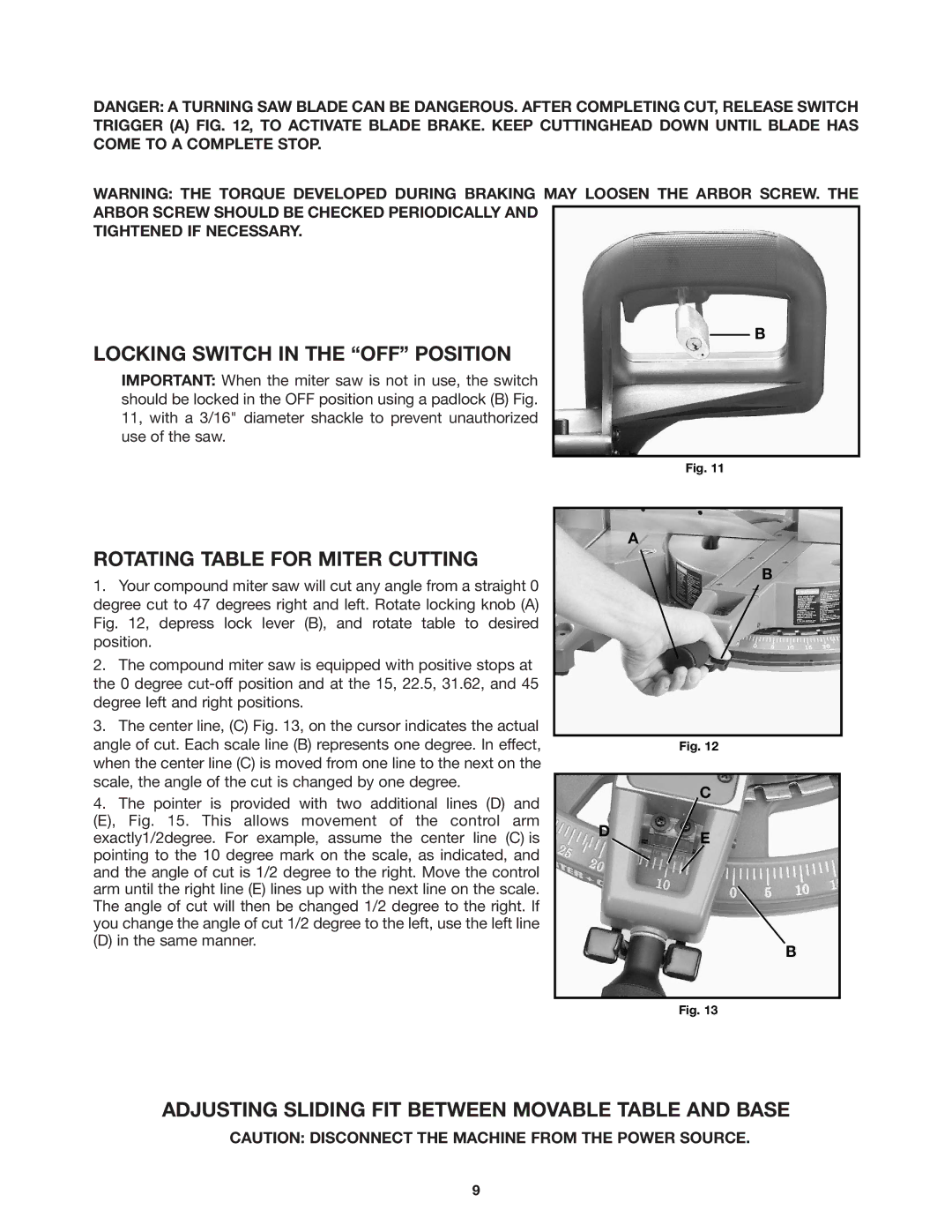
DANGER: A TURNING SAW BLADE CAN BE DANGEROUS. AFTER COMPLETING CUT, RELEASE SWITCH TRIGGER (A) FIG. 12, TO ACTIVATE BLADE BRAKE. KEEP CUTTINGHEAD DOWN UNTIL BLADE HAS COME TO A COMPLETE STOP.
WARNING: THE TORQUE DEVELOPED DURING BRAKING MAY LOOSEN THE ARBOR SCREW. THE ARBOR SCREW SHOULD BE CHECKED PERIODICALLY AND
TIGHTENED IF NECESSARY.
B
LOCKING SWITCH IN THE “OFF” POSITION
IMPORTANT: When the miter saw is not in use, the switch should be locked in the OFF position using a padlock (B) Fig. 11, with a 3/16" diameter shackle to prevent unauthorized use of the saw.
ROTATING TABLE FOR MITER CUTTING
1.Your compound miter saw will cut any angle from a straight 0 degree cut to 47 degrees right and left. Rotate locking knob (A) Fig. 12, depress lock lever (B), and rotate table to desired position.
2.The compound miter saw is equipped with positive stops at the 0 degree
3.The center line, (C) Fig. 13, on the cursor indicates the actual angle of cut. Each scale line (B) represents one degree. In effect, when the center line (C) is moved from one line to the next on the scale, the angle of the cut is changed by one degree.
4.The pointer is provided with two additional lines (D) and (E), Fig. 15. This allows movement of the control arm exactly1/2degree. For example, assume the center line (C) is pointing to the 10 degree mark on the scale, as indicated, and and the angle of cut is 1/2 degree to the right. Move the control arm until the right line (E) lines up with the next line on the scale. The angle of cut will then be changed 1/2 degree to the right. If you change the angle of cut 1/2 degree to the left, use the left line
(D) in the same manner.
Fig. 11
A
B
Fig. 12
C
DE
B
Fig. 13
ADJUSTING SLIDING FIT BETWEEN MOVABLE TABLE AND BASE
CAUTION: DISCONNECT THE MACHINE FROM THE POWER SOURCE.
9
